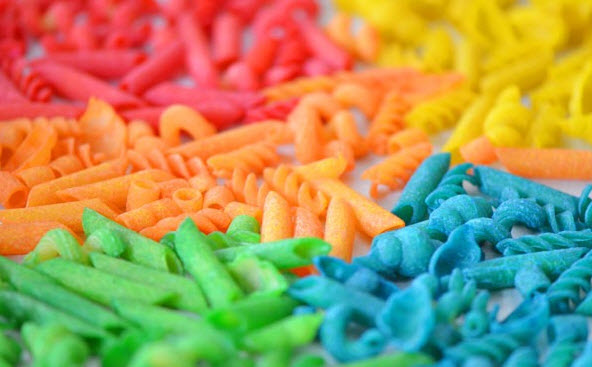Sensory Play: A DIY Shape & Color Sorter
- August 29, 2014
- no comments yet
Since birth, babies are wired to explore the world through their five senses. As they grow, from smelling their first flower, to dipping their finger into ketchup and tasting it for the first time, to feeling the texture of laces when learning to tie their shoe, everything is a learning experience for little toddlers. Such sensory exploration helps children better understand their surroundings as they become increasingly aware of the great big world. A great way to encourage sensory exploration is through sensory play. And what child doesn’t like to play?
Sensory play is any activity that stimulates any or all of a child’s sense of sight, smell, taste, hearing and touch. Experts agree that by providing young children with opportunities to explore different mediums and experiences, we help them develop and refine a whole host of skills – cognitive, social, emotional, physical, creative and linguistic.
Our responsibility as parents is to help our children flourish to their maximum capacities. So it’s important to encourage sensory play as much as we can. It doesn’t have to be an expensive toy, or an outing to an exciting place. The neat thing about sensory play is that you can make up just about any learning experience with items that you have laying around your house and a dash of creativity – or in this case, a simple, inexpensive, and above all, fun DIY sensory game can be made with some common pantry items that most of us already have
This DIY sorter targets the sight and touch senses – helping your tots with fine motor skills development, specifically their hand-eye coordination, as well as their language skills, and recognition of shapes, colors and textures.
What You’ll Need:
Different kinds of pastas – you can use as many kinds as you want (I had penne, elbow, and rotini readily available in my pantry)
Food coloring
Glass bowls (2 bowls for each pasta type) (Glass would be best so that little ones can see the colors through the bowls. (And glass won’t absorb the dye). Just be careful if little hands are helping you mix – we don’t want any shattered bowls)!
Spoons
Foil
Plastic containers (with lids if you also want to use them for storage)
Step 1: Pour pastas into the bowls. The quantity is entirely up to you, but make sure that each type of pasta is poured into two different bowls.
TIP: if your toddler is a pick-up and throw type, and you want to save yourself from a big pasta mess down the line, I would suggest that you make a small amount to start with. Or, alternatively, you can make the entire bags/boxes of pastas and only give limited quantities to your toddler each time they play.
Step 2: Add different food coloring colors to the different bowls. Make sure that no two bowls containing the same kind of pasta are dyed the same color. You can adjust color shades by adding more or less of the color to each bowl.
TIP: get creative and mix some of the food coloring together to form extra colors. Back to elementary basics – blue + red = purple, yellow + blue = green, red + yellow = orange… (You can also leave some bowls of pasta un-dyed and that can be a color on its own)
Step 3: Once the color absorbs and starts to dry, pour out the pastas onto aluminum foil and spread in a single layer. Let dry completely.
Step 4: When dry, mix the pastas together and your sorter is complete!
There are two ways to play – the pastas can be sorted by color, or by shape/type of pasta. Have your toddler separate the pastas and place them in the plastic containers.
TIP: if separating by color, get plastic containers in the same colors that you dyed your pastas. The containers will serve as visual cues for your toddler and can help them sort the colors and match them to the appropriate containers.
The cool thing about this DIY is that parents can make the sorter with their toddlers. Pouring the different pastas into the bowls, adding food coloring, stirring up the mixtures and waiting for the color to dry are all sensory learning experiences in and of themselves. Your toddler(s) will love partaking in the process of making this, and then will enjoy reaping the fruits of their labor when it’s time to play. It’s a win-win.
Image Credit: onelittleproject.com
Filed in: Educational Corner, Kid's Corner, Parents, Things To Do

Leave a Reply
You must be logged in to post a comment.